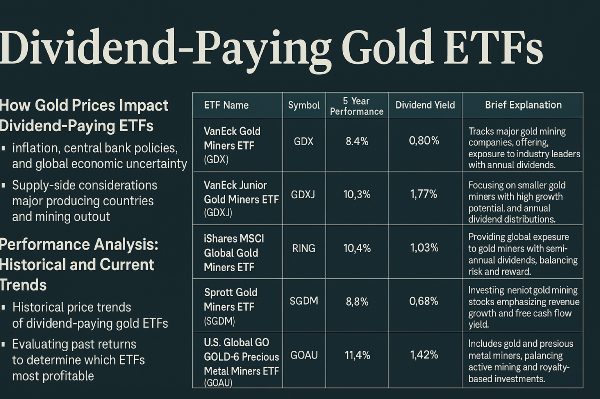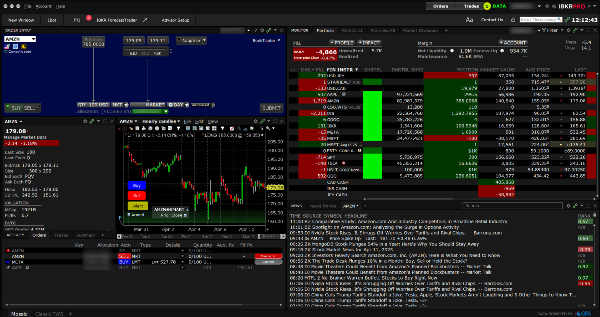Introduction
Large-cap funds play a crucial role in investment portfolios by providing exposure to well-established companies with strong market influence. These funds invest in large-cap stocks, which are known for their stability, lower volatility, and consistent long-term growth potential. Investors often favor large-cap funds for their ability to weather economic downturns while delivering reliable returns. However, assessing the safety of these investments requires careful consideration of risks. This article examines these factors to help investors determine whether large-cap funds align with their financial goals and risk tolerance.
Understanding Large-Cap Funds
Large-cap stocks are shares of companies with a market capitalization of 10 billion or more. These often provide investors with lower volatility compared to smaller companies, making them a preferred choice for those seeking steady returns. Many of these companies also pay dividends. Large-cap funds can be either actively managed or index-based. Actively managed funds rely on portfolio managers to select stocks and adjust allocations based on market conditions, aiming to outperform benchmark indices. Index-based funds, on the other hand, passively track indices like the S&P 500 or Russell 1000, replicating their composition to match market performance.
Index funds provide cost efficiency and predictable returns, making them a popular choice for long-term investors. Historically, large-cap companies have demonstrated resilience during economic downturns. These firms often have diversified revenue streams, strong balance sheets, and established market positions, allowing them to navigate financial crises more effectively. They are a cornerstone of many investment portfolios.
Risk Factors Associated with Large-Cap Funds
Large-cap funds are susceptible to market volatility, particularly during economic downturns. Investor sentiment, interest rate fluctuations, and inflation can all contribute to sharp declines in stock prices. Historically, market corrections have impacted large-cap stocks due to their broad exposure to macroeconomic conditions though with fast recovery. Sector-specific risks and concentration issues can also affect large-cap funds. If a fund is heavily weighted toward a particular industry, it will be impacted by any sectoral volatility. Diversification across multiple industries helps mitigate these risks, but investors should evaluate the challenges of these industries.
Compared to small- and mid-cap stocks, large-cap funds may underperform in certain market conditions. They may not capture the same level of rapid expansion that is seen in smaller firms. Investors seeking aggressive growth and balanced risk may need to complement large-cap funds with small- and mid-cap equities.
Comparing Large-Cap Funds to Other Investment Options
Large-cap funds differ from small-cap and mid-cap funds primarily in terms of company size and risk profile. Mid-cap funds focus on companies with market values between $2 billion and $10 billion, while small-cap funds target firms below $2 billion. Investors choose between these categories based on their risk tolerance and investment objectives. Large-cap funds provide consistent returns and lower risk, making them ideal for conservative investors seeking long-term stability. Mid-cap funds offer a mix of stability and growth, appealing to those willing to accept moderate risk for higher returns.
Small-cap funds, while volatile, present significant growth opportunities, often outperforming larger companies during economic expansions. Choosing between index funds and actively managed large-cap funds depends on investment goals and cost considerations. Index funds offer predictable returns, lower expense ratios and tax efficiency. Actively managed funds provide greater flexibility, rely on portfolio managers to select stocks and incur higher fees. Investors should weigh these factors when selecting the most suitable large-cap fund for their portfolio.
Macroeconomic Trends Impacting Large-Cap Investments
Interest rates and inflation play a significant role in shaping large-cap stock performance. When interest rates rise, borrowing costs increase, leading to reduced corporate spending and lower profit margins. Large-cap stocks, particularly those in capital-intensive industries, may experience slower growth as financing becomes more expensive. Inflation also affects stock valuations. However, companies with strong pricing power and diversified revenue streams tend to navigate inflationary periods more effectively.
Global economic conditions influence large-cap companies by affecting trade, consumer demand, corporate profitability and stock price. Geopolitical instability, trade policies, and supply chain disruptions also play a role in shaping large-cap stock performance. Future projections for large-cap stock performance suggest steady growth, albeit with potential volatility. Analysts anticipate that U.S. large-cap equities will deliver annualized returns of approximately 6% over the next decade, supported by strong earnings growth and stable economic conditions.
Diversification Strategies with Large-Cap Funds
Large-cap funds play a crucial role in a diversified portfolio by providing stability and consistent returns. Investors often use large-cap funds as a foundation, complementing them with mid-cap and small-cap stocks to enhance growth potential. Balancing risk and returns requires combining large-cap funds with other asset classes such as bonds, real estate, and international equities. Bonds provide stability during market downturns, while international stocks offer exposure to global growth opportunities. A well-diversified portfolio ensures that losses in one asset class can be offset by gains in another, reducing overall risk. Adjusting allocation based on market cycles and economic conditions is essential for optimizing portfolio performance. This will ensure that their portfolios remain aligned with long-term financial objectives.
Tax Efficiency and Large-Cap Fund Investments
Passive large-cap funds offer significant tax advantages compared to actively managed funds. Since passive funds track benchmark indices and involve minimal trading, they generate fewer taxable events, reducing capital gains distributions. Actively managed funds, on the other hand, frequently buy and sell securities, leading to higher realized gains and increased tax liabilities for investors. Studies indicate that nearly 97% of actively managed large-cap funds underperform on an after-tax basis over a decade, reinforcing the tax efficiency of passive investing. Investors can place large-cap index funds in tax-advantaged accounts such as IRAs or 401(k)s to defer taxes on gains.
Selecting funds with lower dividend yields can minimize taxable income, ensuring a more efficient investment approach. Long-term tax planning requires careful portfolio structuring to maximize after-tax returns. Utilizing tax-efficient investment vehicles, such as ETFs and municipal bonds, can help mitigate tax liabilities while maintaining portfolio stability. Regular portfolio rebalancing and strategic withdrawals from tax-deferred accounts further enhance long-term tax efficiency, ensuring sustained wealth accumulation.
Investor Suitability and Considerations
Large-cap funds are ideal for conservative investors, retirees, and those looking for predictable returns. Additionally, they provide diversification across industries, reducing the risk associated with individual stock selection. Evaluating risk tolerance and investment objectives is essential when considering large-cap funds. Understanding financial goals—whether wealth preservation, income generation, or growth—helps determine the appropriate allocation to large-cap funds. Choosing the right large-cap fund requires assessing factors such as expense ratios, historical performance, and sector exposure.
Conclusion
Large-cap funds are a reliable choice for long-term investors seeking lower volatility and consistent returns. While these funds provide diversification and tax efficiency, they may underperform in high-growth market cycles and lack flexibility in stock selection. Understanding economic trends, portfolio allocation strategies, and individual risk tolerance is essential for optimizing large-cap fund investments. By integrating these funds into a well-structured portfolio, investors can achieve financial security while navigating market fluctuations effectively.



























Introduction
Large-cap funds play a crucial role in investment portfolios by providing exposure to well-established companies with strong market influence. These funds invest in large-cap stocks, which are known for their stability, lower volatility, and consistent long-term growth potential. Investors often favor large-cap funds for their ability to weather economic downturns while delivering reliable returns. However, assessing the safety of these investments requires careful consideration of risks. This article examines these factors to help investors determine whether large-cap funds align with their financial goals and risk tolerance.
Understanding Large-Cap Funds
Large-cap stocks are shares of companies with a market capitalization of 10 billion or more. These often provide investors with lower volatility compared to smaller companies, making them a preferred choice for those seeking steady returns. Many of these companies also pay dividends. Large-cap funds can be either actively managed or index-based. Actively managed funds rely on portfolio managers to select stocks and adjust allocations based on market conditions, aiming to outperform benchmark indices. Index-based funds, on the other hand, passively track indices like the S&P 500 or Russell 1000, replicating their composition to match market performance.
Index funds provide cost efficiency and predictable returns, making them a popular choice for long-term investors. Historically, large-cap companies have demonstrated resilience during economic downturns. These firms often have diversified revenue streams, strong balance sheets, and established market positions, allowing them to navigate financial crises more effectively. They are a cornerstone of many investment portfolios.
Risk Factors Associated with Large-Cap Funds
Large-cap funds are susceptible to market volatility, particularly during economic downturns. Investor sentiment, interest rate fluctuations, and inflation can all contribute to sharp declines in stock prices. Historically, market corrections have impacted large-cap stocks due to their broad exposure to macroeconomic conditions though with fast recovery. Sector-specific risks and concentration issues can also affect large-cap funds. If a fund is heavily weighted toward a particular industry, it will be impacted by any sectoral volatility. Diversification across multiple industries helps mitigate these risks, but investors should evaluate the challenges of these industries.
Compared to small- and mid-cap stocks, large-cap funds may underperform in certain market conditions. They may not capture the same level of rapid expansion that is seen in smaller firms. Investors seeking aggressive growth and balanced risk may need to complement large-cap funds with small- and mid-cap equities.
Comparing Large-Cap Funds to Other Investment Options
Large-cap funds differ from small-cap and mid-cap funds primarily in terms of company size and risk profile. Mid-cap funds focus on companies with market values between $2 billion and $10 billion, while small-cap funds target firms below $2 billion. Investors choose between these categories based on their risk tolerance and investment objectives. Large-cap funds provide consistent returns and lower risk, making them ideal for conservative investors seeking long-term stability. Mid-cap funds offer a mix of stability and growth, appealing to those willing to accept moderate risk for higher returns.
Small-cap funds, while volatile, present significant growth opportunities, often outperforming larger companies during economic expansions. Choosing between index funds and actively managed large-cap funds depends on investment goals and cost considerations. Index funds offer predictable returns, lower expense ratios and tax efficiency. Actively managed funds provide greater flexibility, rely on portfolio managers to select stocks and incur higher fees. Investors should weigh these factors when selecting the most suitable large-cap fund for their portfolio.
Macroeconomic Trends Impacting Large-Cap Investments
Interest rates and inflation play a significant role in shaping large-cap stock performance. When interest rates rise, borrowing costs increase, leading to reduced corporate spending and lower profit margins. Large-cap stocks, particularly those in capital-intensive industries, may experience slower growth as financing becomes more expensive. Inflation also affects stock valuations. However, companies with strong pricing power and diversified revenue streams tend to navigate inflationary periods more effectively.
Global economic conditions influence large-cap companies by affecting trade, consumer demand, corporate profitability and stock price. Geopolitical instability, trade policies, and supply chain disruptions also play a role in shaping large-cap stock performance. Future projections for large-cap stock performance suggest steady growth, albeit with potential volatility. Analysts anticipate that U.S. large-cap equities will deliver annualized returns of approximately 6% over the next decade, supported by strong earnings growth and stable economic conditions.
Diversification Strategies with Large-Cap Funds
Large-cap funds play a crucial role in a diversified portfolio by providing stability and consistent returns. Investors often use large-cap funds as a foundation, complementing them with mid-cap and small-cap stocks to enhance growth potential. Balancing risk and returns requires combining large-cap funds with other asset classes such as bonds, real estate, and international equities. Bonds provide stability during market downturns, while international stocks offer exposure to global growth opportunities. A well-diversified portfolio ensures that losses in one asset class can be offset by gains in another, reducing overall risk. Adjusting allocation based on market cycles and economic conditions is essential for optimizing portfolio performance. This will ensure that their portfolios remain aligned with long-term financial objectives.
Tax Efficiency and Large-Cap Fund Investments
Passive large-cap funds offer significant tax advantages compared to actively managed funds. Since passive funds track benchmark indices and involve minimal trading, they generate fewer taxable events, reducing capital gains distributions. Actively managed funds, on the other hand, frequently buy and sell securities, leading to higher realized gains and increased tax liabilities for investors. Studies indicate that nearly 97% of actively managed large-cap funds underperform on an after-tax basis over a decade, reinforcing the tax efficiency of passive investing. Investors can place large-cap index funds in tax-advantaged accounts such as IRAs or 401(k)s to defer taxes on gains.
Selecting funds with lower dividend yields can minimize taxable income, ensuring a more efficient investment approach. Long-term tax planning requires careful portfolio structuring to maximize after-tax returns. Utilizing tax-efficient investment vehicles, such as ETFs and municipal bonds, can help mitigate tax liabilities while maintaining portfolio stability. Regular portfolio rebalancing and strategic withdrawals from tax-deferred accounts further enhance long-term tax efficiency, ensuring sustained wealth accumulation.
Investor Suitability and Considerations
Large-cap funds are ideal for conservative investors, retirees, and those looking for predictable returns. Additionally, they provide diversification across industries, reducing the risk associated with individual stock selection. Evaluating risk tolerance and investment objectives is essential when considering large-cap funds. Understanding financial goals—whether wealth preservation, income generation, or growth—helps determine the appropriate allocation to large-cap funds. Choosing the right large-cap fund requires assessing factors such as expense ratios, historical performance, and sector exposure.
Conclusion
Large-cap funds are a reliable choice for long-term investors seeking lower volatility and consistent returns. While these funds provide diversification and tax efficiency, they may underperform in high-growth market cycles and lack flexibility in stock selection. Understanding economic trends, portfolio allocation strategies, and individual risk tolerance is essential for optimizing large-cap fund investments. By integrating these funds into a well-structured portfolio, investors can achieve financial security while navigating market fluctuations effectively.